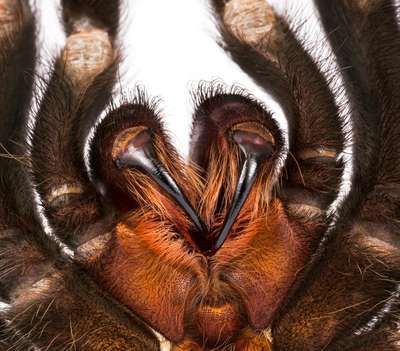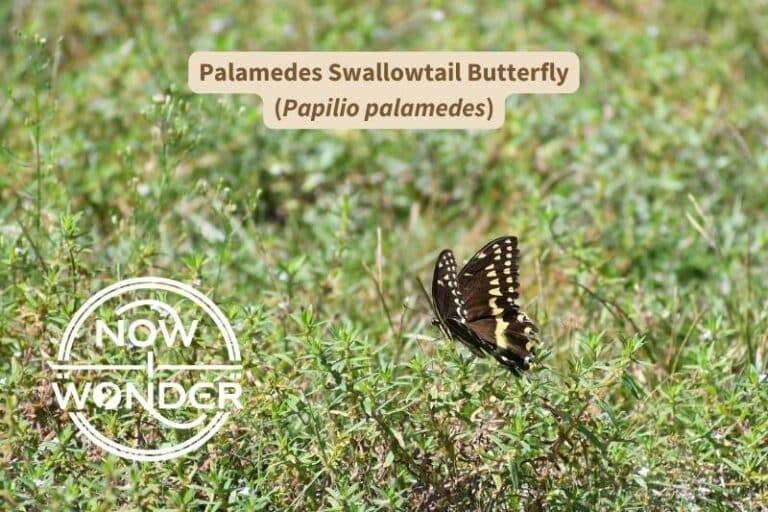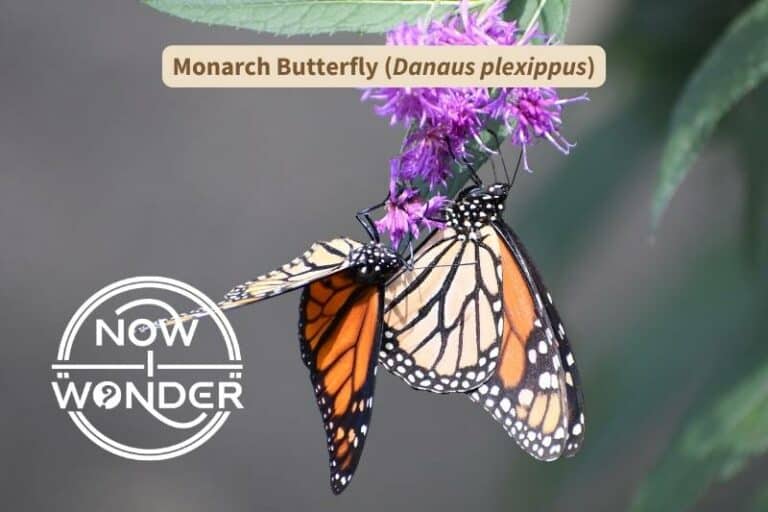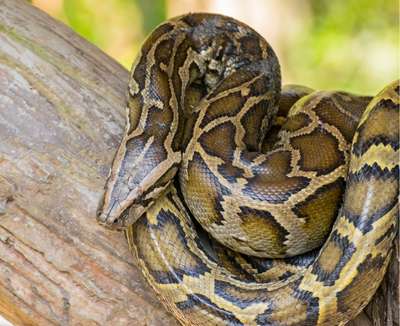As you might guess from this butterfly’s common name “Common Buckeye”, Junonia coenia is an easy butterfly to find in North Carolina. But “easy” doesn’t mean “boring”, and this species is well worth your time to observe.
Common Buckeye butterflies are large butterflies, with wingspans up to 2.7 inches (68 mm). Found throughout North Carolina, they are easily recognizable thanks to several large, vivid, multi-colored eyespots, two orange forewing bars, and a habit of perching on open ground with wings outstretched.
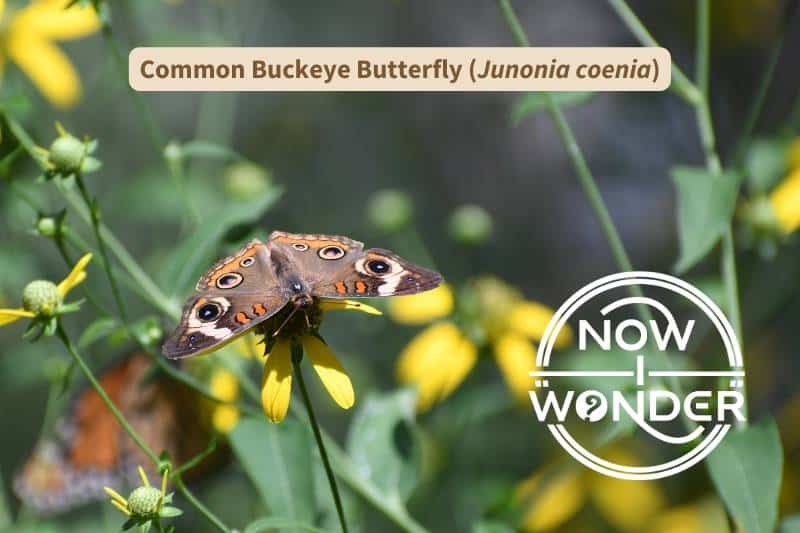
Common Buckeyes have several characteristics that endear them to me. Even after all the years I’ve spent chasing butterflies in the field, I still get excited about spotting one of these brush-footed butterflies.
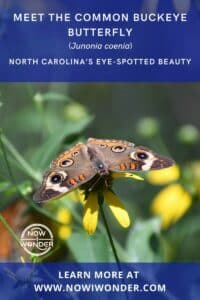
First, at least in my experience, they are so easy to find in the wild, especially compared to some other butterfly species. Their flight season is long, extending from late March and often lasting through November in North Carolina, thanks to our state’s mild winters. Also, they feed on a wide variety of weeds and wildflowers, many of which grow in the kinds of habitats casual nature lovers spend time in, such as fields, meadows, gardens, and near open stands of pine.
Second, they are immediately identifiable in the field (which I appreciate) and great fun to observe. While definitely not as colorful as many other butterflies, the large eyespots on their wings are dramatic and easy to see from a distance. Whether they evolved these eyespots to help them identify others of their own species, as a startle-defense against predators, or for some other reason, I think their eyespots are mesmerizing. They draw my eyes and the longer I look, the deeper and more colorful the spots look.
Third, I think they are so much easier to photograph compared to other species – which is no small consideration to an amateur naturalist like myself! Many butterflies are challenging to photograph because they flutter around so much and so quickly. I end up chasing one all over a field with only burrs and blurry pictures to show for my efforts.
Not so with Common Buckeyes. This species loves to perch out in the open, even alighting on rocks or gravel where they stand out beautifully against the background.
And they stay put!
I can’t tell you how many times a Common Buckeye has rescued an otherwise completely unsuccessful creature-spotting excursion for me by landing mere feet away and remaining motionless for minutes. I know I shouldn’t anthropomorphize, but it almost feels like these butterflies pose for me; they give me plenty of time to adjust my camera settings and get some shots, then flit casually off – always with my thanks.
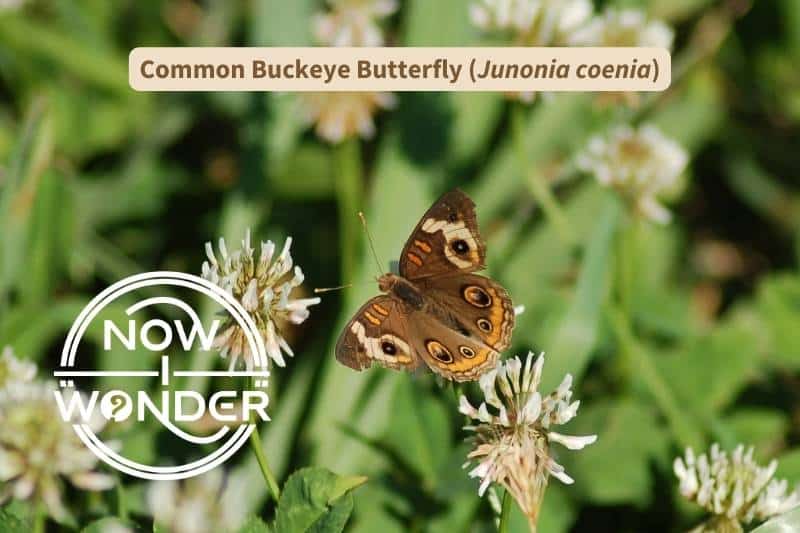
Fun Facts About Common Buckeye Butterflies To Wow Your Friends
- Common Buckeye caterpillars eat so many different kinds of plants that this species can be used to help control weeds in home gardens (Bartlett Wright 1993).
- Common Buckeye butterflies are cold-sensitive and fly south to the southern United States during the winter. They are most commonly found along their travel routes (especially river valleys) and must re-colonize the northern reaches of their range every spring.
- Male Common Buckeye butterflies are territorial and often fly out to meet moving objects. This trait, along with a liking for perching on bare ground, helps make these butterflies easy to observe from a distance. However, they are wary and likely to fly off when approached.
- Planting snapdragons in your home garden can attract Common Buckeye butterflies, as these cultivated annuals are part of the plantain family Plantaginaceae.
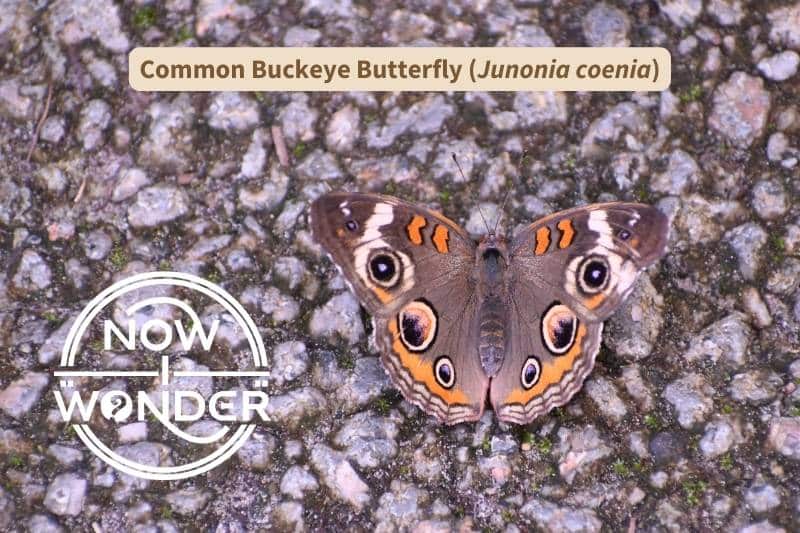
How Are Common Buckeye Butterflies Classified?
| Kingdom | Animalia |
| Phylum | Arthropoda |
| Class | Insecta |
| Order | Lepidoptera |
| Family | Nymphalidae (“brushfoots”) (subfamily Nymphalinae “true brushfoots”) |
| Genus species | Junonia coenia |
Common Buckeye butterflies (also called simply “Buckeyes”) belong to the “brushfoot butterfly” family Nymphalidae, which contains more species worldwide than any other butterfly family. There are approximately 3000 brush-foot butterfly species worldwide, around 160 of which can be found living in, or visiting, North America (Pyle 1981).
Butterflies classified in this family have reduced front legs, which makes them appear to have only four legs at first glance. The front legs look like little brushes (thus the family name) and aren’t used for walking.
How Do I Know I’m Looking at a Common Buckeye Butterfly?
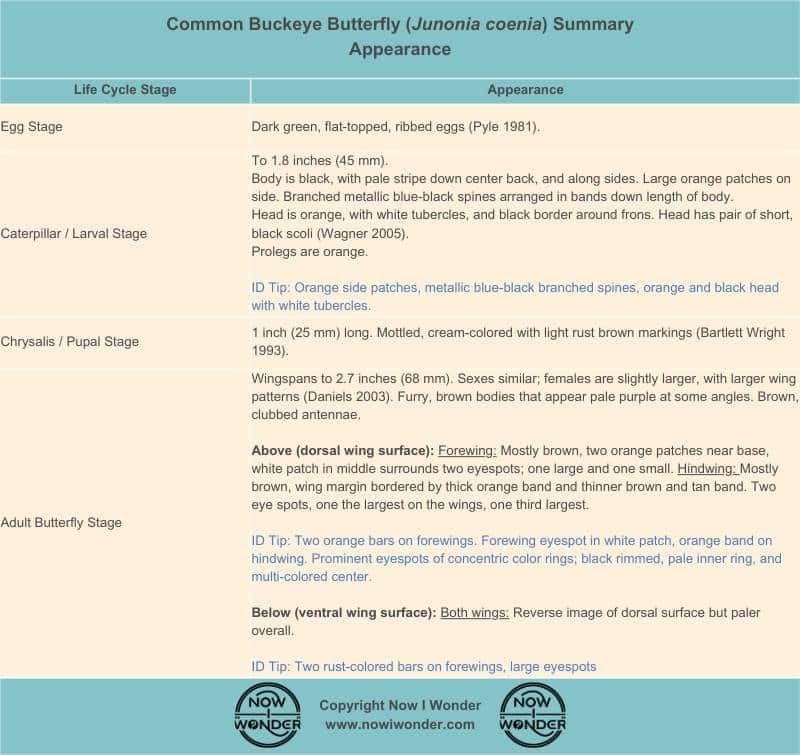
Appearance of Common Buckeye Butterfly Eggs:
Female Common Buckeye butterflies lay dark green, ribbed eggs that have flat tops (Pyle 1981).
Appearance of Common Buckeye Butterfly Caterpillars / Larvae
A Common Buckeye caterpillar is black and spiny, with orange prolegs. Its grows to approximately 1.8 inches (45 mm). Its head is orange, spotted with white tubercles, and is black around what looks like the nose area of its face (technically known as the “frons”). A branched, black spine sprouts from each lobe of its head (Wagner 2005).
Its body has four lengthwise rows of spots; two rows of orange spots along the caterpillar’s back and a row of cream spots along both sides. Its metallic blue-black spines are branched and have colorful bases; blue for the spines covering the back, and orange for those projecting from the back (Bartlett Wright 1993).
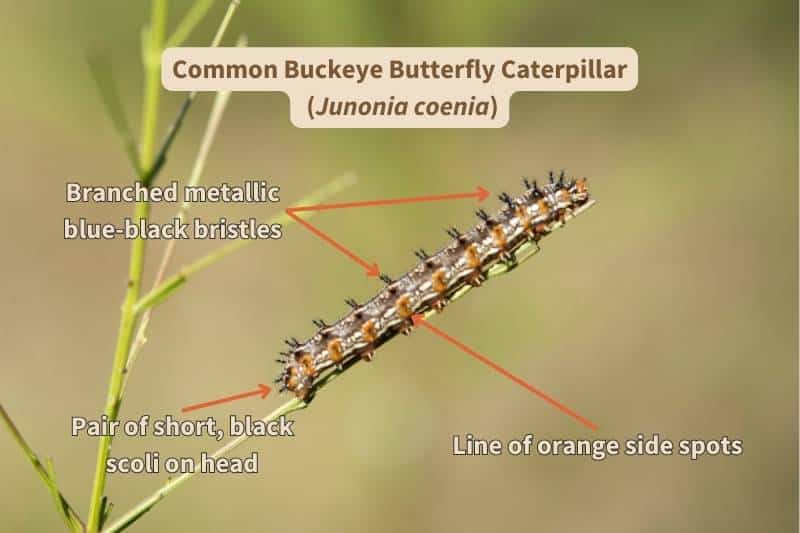
Common Buckeye chrysalids are usually 1 inch long (25 mm) (Pyle 1981) and are cream-colored, with light rust brown markings. But their appearance can vary. Sometimes, they are nearly black (Bartlett Wright 1993).
Appearance of Adult Common Buckeye Butterflies
Common Buckeye butterflies are medium-sized brush-foots, growing between 1.5 to 2.7 inches (38 – 68mm) across. Their bodies are furry and brown, although in some lights, the brown shades into violet. Their antennae are brown and have clubbed tips. Males and females look similar, although females tend to be slightly larger and have larger wing patterns (Daniels 2003).
The dorsal wing surface is mostly brown but with a distinct white patch and a pair of orange bars oriented top to bottom near the front edge of each forewing.
But even more than the orange bars, Common Buckeyes are distinguished by a series of four prominent eyespots on the dorsal surface of its wings.
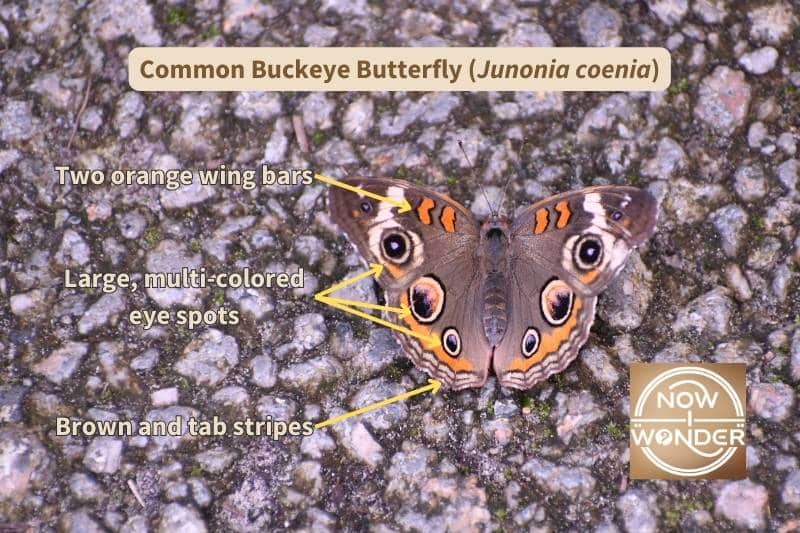
Each forewing and hindwing has two eyespots, one small and one quite large. On the forewing, the smallest eyespot comes first (looking from head to abdomen), followed by the larger spot. On the hindwing, this pattern is reversed, with the largest eye spot located closer to the leading edge of the wing and the smaller one towards the end of the wing.
These eyespots are made up of a series of concentric circles that look remarkably like eyes, complete with irises, pupils, and even light shine. Common Buckeye butterflies can vary slightly in how saturated their dorsal wing colors are, but their eyespots are usually patterned in the same way.
The outermost ring of each eyespot is a deep, velvety black that visually advances the eyespot – the spot jumps out and draws the eye. This outer ring contrasts with the adjacent inner ring, which is usually cream or white.
The inner rings of each eyespot vary slightly, depending on the individual Common Buckeye and the eyespot’s size.
The centers of a Common Buckeye’s smaller eyespots are deep black with white centers; the combination of contrasting rings along with the white centers make the eyespots look amazingly like dilated pupils in strong light.
The larger eyespots are more intricate. Their centers are a combination of rust, cream, or lavender and black, with the black positioned slightly off center. This combination of colors against the off-center black looks amazingly like an iris and pupil looking out at an angle.
As with many butterflies, the ventral (underside) surface of a Common Buckeye’s wings is subdued compared to its dorsal surface. The main color is tan, the wing bars are more rust than bright red, and the largest eyespots are still visible, but the color is muted with less contrast.
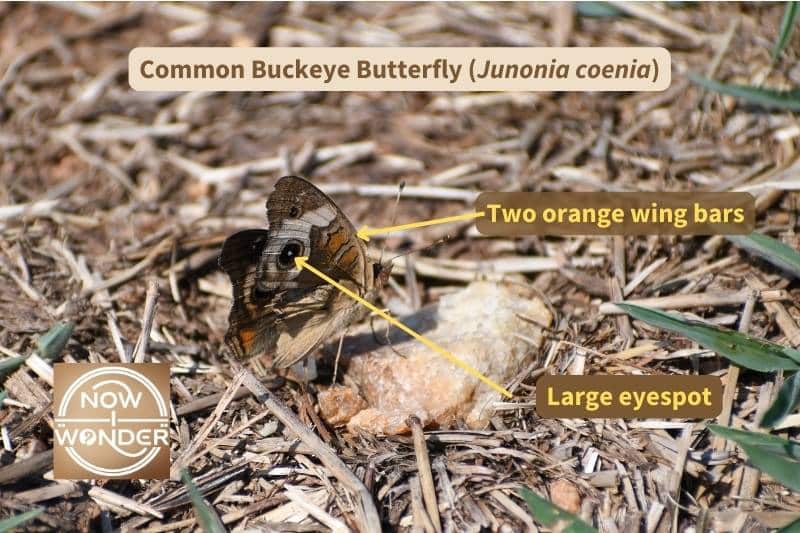
When Can I Find Common Buckeye Butterflies in North Carolina?
Common Buckeye butterflies can be found all across North Carolina from late March to late November. They can’t withstand freezing temperatures, so individuals in the northern part of their extensive range fly south in the fall. Some may overwinter in North Carolina during exceptionally warm winters but most of the time, they spend the winter months in the Gulf Coast states, like Florida (Daniels 2003).
Where Should I Look to Find Common Buckeye Butterflies in North Carolina?
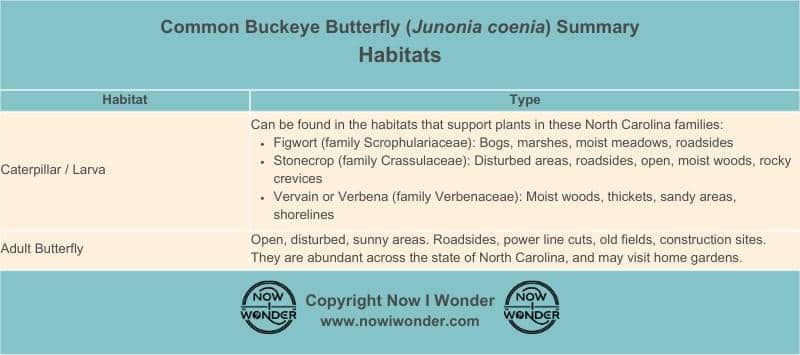
Look for these butterflies in open areas that have been disturbed in some way. Roadsides, power line cuts, old fields, and gardens are good bets. Common Buckeye butterflies are also common near pine woods and can be spotted throughout the state of North Carolina.
Buckeye caterpillars can be found in the habitats that support their food plants, including:
- Bogs, marshes, moist meadows, roadsides (Figwort family Scrophulariaceae)
- Disturbed areas, roadsides, open, moist woods, rocky crevices (Stonecrop family Crassulaceae)
- Moist woods, thickets, sandy areas, shorelines (Vervain or Verbena family Verbenaceae)
What Do Common Buckeye Butterflies Eat?
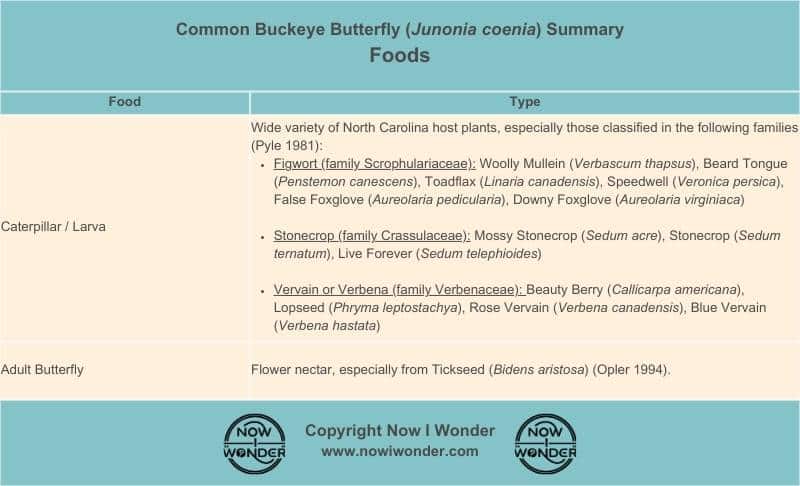
Common Buckeye Butterfly Larval Food Plants
Common Buckeye caterpillars feed on a wide variety of North Carolina host plants, especially those classified in the following families (Pyle 1981):
- Figwort (family Scrophulariaceae): Woolly Mullein (Verbascum thapsus), Beard Tongue (Penstemon canescens), Toadflax (Linaria canadensis), Speedwell (Veronica persica), False Foxglove (Aureolaria pedicularia), Downy Foxglove (Aureolaria virginiaca)
- Stonecrop (family Crassulaceae): Mossy Stonecrop (Sedum acre), Stonecrop (Sedum ternatum), Live Forever (Sedum telephioides)
- Vervain or Verbena (family Verbenaceae): Beauty Berry (Callicarpa americana), Lopseed (Phryma leptostachya), Rose Vervain (Verbena canadensis), Blue Vervain (Verbena hastata)
Adult Common Buckeye Butterfly Food
Adult Common Buckeye butterflies feed on nectar from a variety of flowering plants, especially Tickseed (Bidens aristosa) (Opler 1994).

References
Bartlett Wright, Amy. 1993. Peterson First Guides: Caterpillars. Boston, MA: Houghton Mifflin Company.
Daniels, Jaret C. 2003. Butterflies of the Carolinas. Cambridge, MN: Adventure Publications, Inc.
Glassberg, Jeffrey. 1999. Butterflies Through Binoculars: The East: A Field Guide to the Butterflies of Eastern North America. New York, NY. Oxford University Press.
Niering, William A. and Olmstead, Nancy C. 2001. National Audubon Society Field Guide to Wildflowers: Eastern Region. New York, NY: Alfred A. Knopf.
Opler, Paul A. 1994. Peterson First Guide to Butterflies and Moths. Boston, MA: Houghton Mifflin Company.
Pyle, Robert Michael. 1981. National Audubon Society Field Guide to Butterflies: North America. New York, NY. Alfred A. Knopf.
Wagner, David L., 2005. Princeton Field Guides: Caterpillars of Eastern North America. Princeton, NJ: Princeton University Press.

